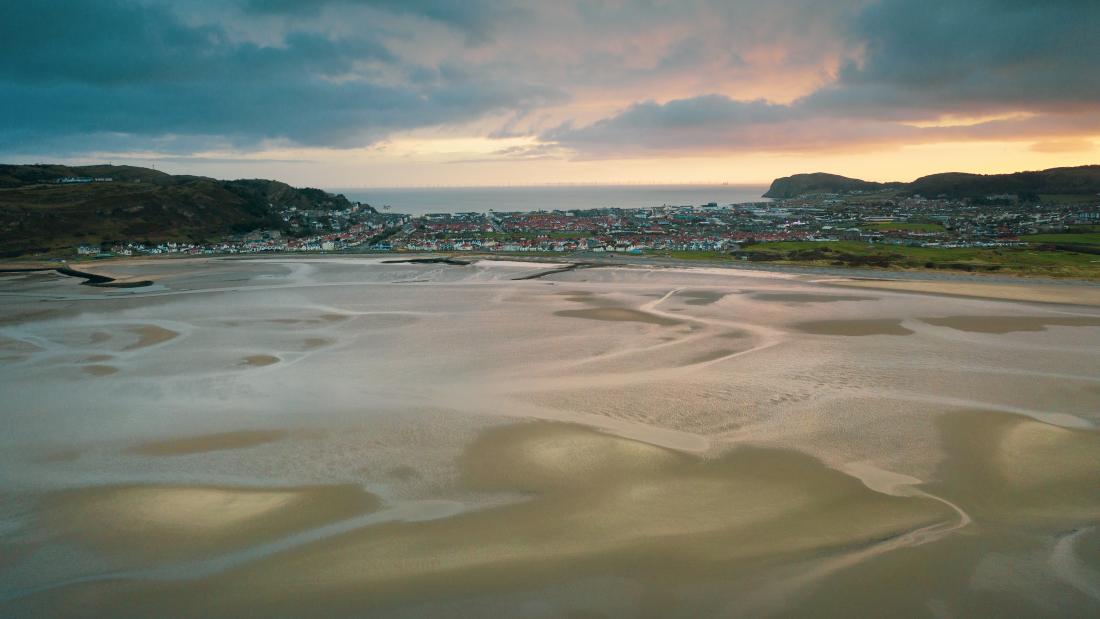The study, which surveyed 1,368 participants across the UK and Ireland, found that 15% of respondents reported being cut off or nearly cut off by the tide at some point in their lives – which translates to 10 million people across the UK overall. Two out of three of these respondents reported that they were undertaking coastal activities that were not supposed to be in or near the water, such as walking or running. Nearly 60% of those who reported a relevant experience reported that they were surprised at how quickly the tide came in and threatened to cut them off from their exit point.
The research revealed that four in ten people have little to no understanding of tides, and only half check tide times before visiting a beach. Even more concerning, only 24% of the public possess the necessary skills to correctly read and interpret tide timetables.
Dr Elisabeth Morris-Webb, Honorary Research Fellow and a lead researcher on the study (now an ocean literacy researcher at Nordland Research Institute in Norway), emphasised the urgent need for better public education on tides: “Our research highlights that many people find it difficult to interpret a tide table to be useful on their local walks. Which is very understandable given its complexity. For instance, on a sandy beach the tide can fill up almost un-noticeable creeks behind you, trapping you on a sand bank, whilst on a walk people may not realise that the tide around a headland has locked them into a small bay. By working with the RNLI, we aim to bridge such knowledge gaps and develop targeted educational resources to prevent avoidable emergencies.”
Dr Thora Tenbrink, Professor of Linguistics at Bangor University added: “Our research into the thinking behind tidal cut off showed that many are confused by the direction the tide can approach from, and when trapped, the speed and height it can quickly rise to. This is not just about individual safety—it’s about changing public perceptions of the sea and ensuring that more people have access to the knowledge they need to stay safe.”
As approximately half of the world’s coastline has a tidal range that exceeds standing depth, being cut off by the tide is not just a British problem. The interdisciplinary research team from Bangor University included Dr Martin Austin (an ocean scientist), Dr Liz Morris-Webb (a marine social scientist), and Professor Thora Tenbrink (a discourse analyst) in the world’s first attempt to examine the public awareness and attitudes towards tides. Their findings inform future RNLI public campaigns and educational initiatives aimed at improving tidal literacy in the UK, but also highlight the need to address public understanding of tide globally, whilst demonstrating how researchers can work together across disciplines to minimise the risk to life, as the seas rise and coasts become more unpredictable places.
In response to the findings, the RNLI is urging the public to take simple but crucial steps before heading to the coast – such as making sure they know what the tide will be doing that day at the place they’re visiting. This can be done by asking locals and by checking a trusted online source, such as the Met Office, for tide times and coastal conditions. The tide moves in and out twice within a 24-hour period, varying by location and day, meaning even familiar beaches can pose unexpected risks.
Chris Cousens, Water Safety Lead at the RNLI, reinforced this message “The results of the survey are eye opening and show that a large proportion of the public have gaps in tidal knowledge. We will be using the findings to help shape our safety messaging in public campaigns and education going forward. Anyone heading to the coast is reminded of the importance of staying safe and checking the weather and tide times. If you can’t interpret the tide timetable, always seek local advice and stay alert. ”
Key messages for coastal visitors that arise from the research include:
- Know when low water is at your chosen destination. This can be very different depending on where you are – remember that every beach is different. Avoid islands, isolated rocks, sand banks and headland walks on a rising tide.
- Watch the tide. Stay alert and monitor your surroundings at the beach. Watch the direction of the incoming tide, as well as its speed and strength.
- Check and know your exits, especially if you are walking around cliffy headlands.
With Bangor University’s research paving the way for improved public awareness, the RNLI is hopeful that enhanced tidal knowledge will lead to fewer emergencies along the UK’s coastline. In addition, the research team encourage people working with coastal users around the world, and ocean literacy researchers specifically, to use these gaps in knowledge as a starting point for more work into tidal literacy, so that the public can enjoy safe and positive access to the world’s coastline.
The researchers and RNLI would like to especially thank the members of the public who took part in this research by sharing their often traumatic and sometimes life threatening experiences. This advice would not be possible without their valuable insights.

